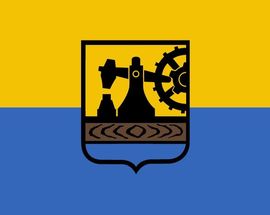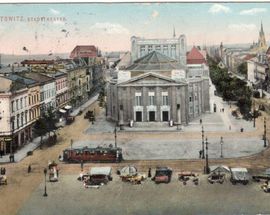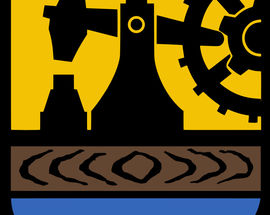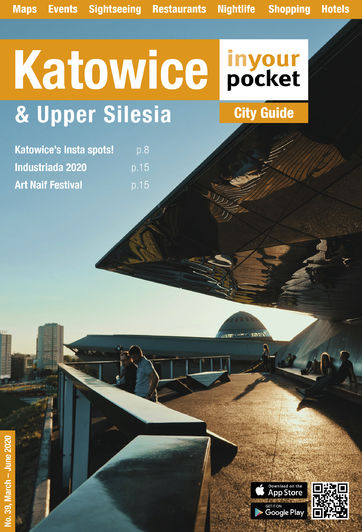A Brief History of Katowice
more than a year agoThings started hotting up in 1742 when the area changed hands once more, this time as the property of the Prussians. 1788 saw Karolina – the area's first mine – opened, and by 1822 historic documents note 102 homesteads in the village of Katowice. Two years later the first school was opened and Katowice started making its first steps into adulthood. What really set the ball rolling was the construction of a railway station in 1847. Industrialist and mining mogul Franz Winkler saw this as an opportunity to build up the mines he owned in the region, and Katowice was quickly developed as an industrial town. September 11, 1865, saw Katowice awarded municipal rights and by 1875 it had grown to hold over 11,000 residents, of which half were of Polish ethnicity. The city continued to prosper as an industrial heartland, with coal and steel industries flourishing. By 1897 it was officially designated as a city, though the streets were anything but a happy place; the even split in population between Germans and Poles was already causing friction.
After the defeat of Germany in WWI, and the founding of a newly independent Polish state, native Poles – inspired by the rhetoric of Wojciech Korfanty – staged three uprisings between 1919 and 1921 in a bid to have the Silesia region incorporated into the Second Polish Republic. To prevent outright war from breaking out the League of Nations finally intervened and in 1922 divided the region beween both Poles and Germans. Kattowitz, as it was known before this date, fell on the Polish side of the divide and inexplicably became an autonomous voivodeship - a privelege unique from any other province in PL. The inter-war years marked a golden age for the city, with the building of the Silesian Parliament complex and one of Poland’s first skyscrapers (Cloud Scraper) being symbolic of the march into the future.
Bad news was lurking around the corner though, and in spite of a heroic defence, the city fell under German control on September 6, 1939. Aside from the savage destruction of the synagogue and the Silesian Museum, physically speaking the city escaped the fiery fate of many eastern cities, and found itself used as a major centre of manufacturing by the Nazis. Liberation came in the form of Soviet tanks in 1945, and the city was once more Polish – in theory. Between 1953 and 1956 it was renamed 'Stalinogród,' and a period of thoughtless development followed; the primitive exploitation of the region’s natural resources saw it marked out as an environmental blackspot with horrific pollution problems. Although there was plenty of work in the mines and steel mills, popular unrest with the communist system was growing fast. Living standards had plummeted, with empty shop shelves and round-the-block queues a common sight. In 1980 a series of strikes inspired by the Gdańsk-born Solidarity movement quickly spread around the country. Demands for better living conditions were initially met, but Solidarity continued to lobby for further reforms and free elections. The Kremlin was furious, and with Soviet invasion a looming threat, appointed communist President Jaruzelski declared a state of martial law on December 13, 1981. Tanks roared into the street, subversives were arrested and telephone lines were cut. On December 16 a military assault was launched on striking miners in Katowice’s ‘Wujek’ mine, resulting in the deaths of nine workers. With Solidarity officially dissolved and its leaders imprisoned, discontent was growing. Pope John Paul II visited Poland, and Katowice, once more in 1983, his mere presence igniting hopes and unifying the people in popular protest. The people would not back down. Over the next few years – buoyed by a Gorbachev-inspired relaxation of Soviet foreign policy – the Polish people continued to batter on the door of freedom.
Renewed labour strikes and a faltering economy nosediving towards disaster forced Jaruzelski into initiating talks with opposition leaders in 1988, and the following year Solidarity was once more granted legal status. Participating in Poland’s first post-Communist election, Solidarity swept to victory, with former electrician Lech Wałęsa leading from the soapbox. Fittingly it was Wałęsa who unveiled a monument in Katowice to the miners killed in 1981 on the tenth anniversary of the event. Poland’s transition to a market economy has since been tough, though the signs seem to point to a bright future for Poland. Katowice itself has done much to repair the environmental damage caused in the post WWII years, and the city is once more booming, with a huge influx of foreign investment marking a reversal of the city's recent fortunes.






Comments